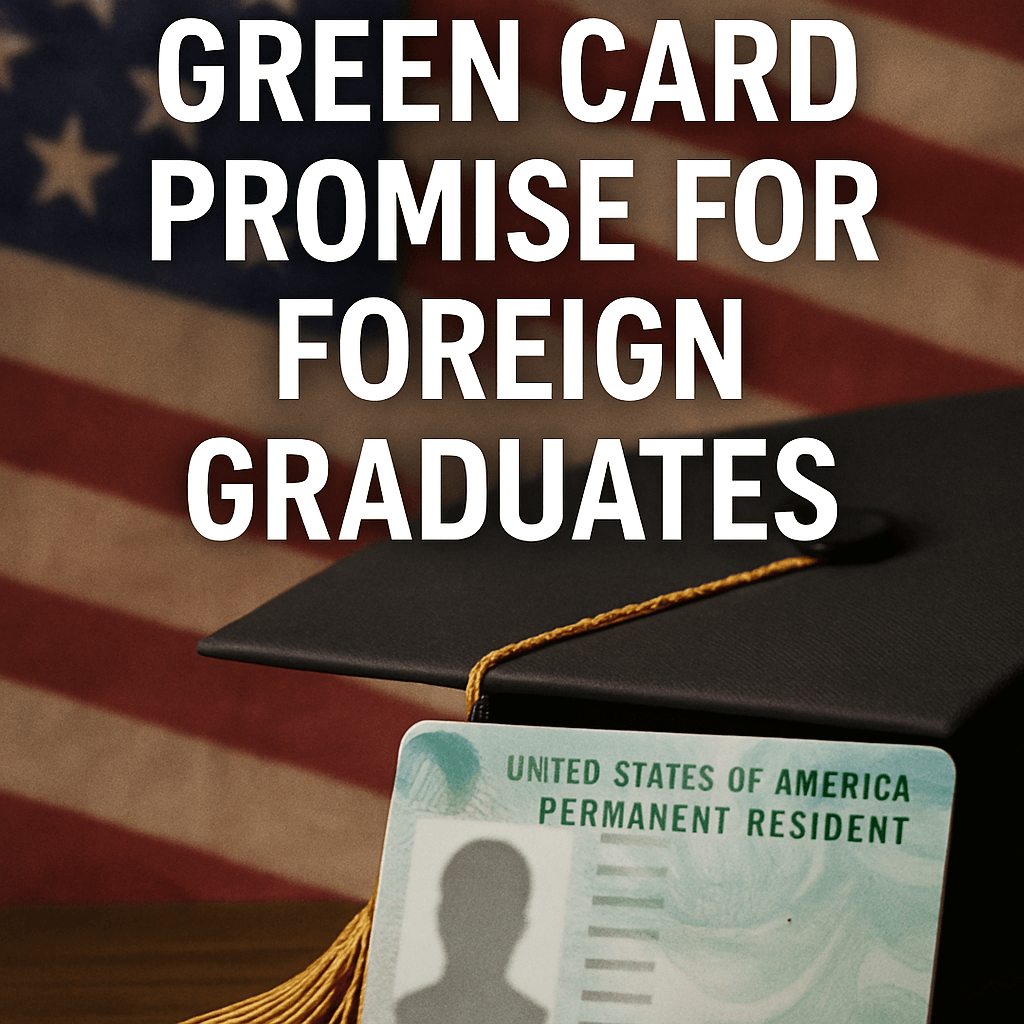Trump’s Green Card Promise for Foreign Graduates

During his 2016 campaign, former President Donald Trump proposed a groundbreaking initiative aimed at attracting the brightest global talent to the United States: granting permanent residency, or green cards, to all foreign students graduating from U.S. colleges and universities. In a podcast interview last June, Trump lamented the loss of talent from prestigious institutions, stating,
“It’s so sad when we lose people from Harvard, MIT, from the greatest schools. That is going to end on Day One.”
Despite this bold claim, the promise never materialized. Instead, the Trump administration’s immigration policies took a sharply restrictive turn that significantly impacted foreign students. As the administration enforced stringent immigration controls, international students faced a barrage of challenges amid a broader campaign to reshape U.S. immigration and education policies.
The Shifting Landscape of Immigration Policy
International students, who often constitute a significant part of the U.S. higher education ecosystem, found themselves at the heart of a heated debate. The administration rolled out numerous directives that complicated the educational experience for foreign scholars, including:
- Termination of Study Permissions: Thousands of international students had their ability to study in the U.S. revoked before the policy was partially reversed following legal challenges.
- Suspension of Student Visa Interviews: Many aspiring students faced delays, as the administration halted new visa applications and interviews for international students seeking admission.
- Challenges at Top Institutions: Institutions like Harvard University reported attempts to limit foreign enrollment, raising concerns over academic diversity and innovation.
Legal challenges proliferated as confusion and anxiety gripped international students, many of whom reported feeling targeted amidst these sweeping policy changes.
Personal Accounts of Struggle
Amid these uncertainties, students navigating their educational journeys in the U.S. shared personal experiences that elucidated the psychological toll of such policies. One notable case is that of Markuss Saule, a freshman at Brigham Young University-Idaho, who expressed his fears regarding re-entry into the U.S. after a trip home to Latvia. In an interview, Saule recounted:
“The whole 10-hour flight … was terrifying,”
highlighting the increased anxiety faced by international students. A top-performing student, he described a stark contrast between his academic aspirations and the anxiety stemming from U.S. immigration policies, stating, “Now I feel a sense of inferiority.”
Comparative Perspectives: Awareness Among International Communities
Reports from international students like Saule, struggling to balance their ambitions against the harsh realities of U.S. immigration policy, reveal a broader pattern of anxiety across diverse communities. This was further emphasized through the experience of Avi, a 24-year-old physics major from India working in Arizona who expressed concerns about his ability to travel for family visits due to rising hostility towards foreigners within U.S. immigration processes.
Operational Mechanisms and Policy Implications
With approximately 240,000 international students residing in the U.S. on student visas and engaging in Optional Practical Training (OPT), concerns over potential policy shifts have heightened fiscal and psychological anxieties among these populations. Employer representatives and educational experts warn that limiting these students’ ability to secure work post-graduation could have long-term ramifications on U.S. innovation and competitiveness.
One prominent policy adviser has openly suggested ending the OPT program altogether, a move that could drastically reduce the number of foreign graduates entering the job market and stifle the technological and scientific advancements that U.S. firms heavily rely upon.
International Education and Future Prospects
Students like Vladyslav Plyaka, from Ukraine, highlight the potential ramifications of extended visa uncertainties. Having chosen to remain in the U.S. to pursue education while conflict erupted in his homeland, Plyaka has grappled with the moral implications of staying versus returning to aid his country. He stated,
“If it was not good, I probably would be on the front lines.”
This sentiment echoes the feelings of many who are left to navigate their aspirations in the context of a precarious immigration landscape, continuously weighing their personal futures against national policies.
A New Perspective on Trump’s Promises
The dichotomy between Trump’s campaign pledges and the reality of subsequent policies raises critical questions about the future of foreign talent in the U.S. education sector and its broader implications for the economy. As domestic and international pressures continue to shape policy decisions, experts urge for a more welcoming framework, one that allows the U.S. to reclaim its status as a global leader in education and innovation.
Ultimately, the issues surrounding international students in the United States underscore a vital conversation about immigration reform, educational accessibility, and the imperative to maintain the flow of ideas and innovations that these students bring.